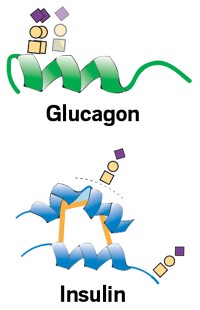Advertisement
Grab your lab coat. Let's get started
Welcome!
Welcome!
Create an account below to get 6 C&EN articles per month, receive newsletters and more - all free.
It seems this is your first time logging in online. Please enter the following information to continue.
As an ACS member you automatically get access to this site. All we need is few more details to create your reading experience.
Not you? Sign in with a different account.
Not you? Sign in with a different account.
ERROR 1
ERROR 1
ERROR 2
ERROR 2
ERROR 2
ERROR 2
ERROR 2
Password and Confirm password must match.
If you have an ACS member number, please enter it here so we can link this account to your membership. (optional)
ERROR 2
ACS values your privacy. By submitting your information, you are gaining access to C&EN and subscribing to our weekly newsletter. We use the information you provide to make your reading experience better, and we will never sell your data to third party members.
Biological Chemistry
'Reining In Ripening'
January 7, 2008
| A version of this story appeared in
Volume 86, Issue 1
Regarding Sarah Everts' fine article on understanding the role plant hormones play in regulating ripening in fruits and vegetables (C&EN, Oct. 29, page 10), the same plant signaling chemicals that regulate ripening also regulate all crop and forest plants' growth and development and plant responses to environmental stress (drought, salinity, heat, and pathogen attack).
This subject is a hot topic for plant physiologists. A number of chemists worldwide are working on plant hormone action and are contributing to systems biology approaches for improving plant production. From a chemistry point of view, there are significant challenges: plant hormones act at micromolar or lower concentrations and are present in a background of abundant primary and secondary metabolites; hormones are rapidly turned over. There are also multiple active compounds in the individual hormone families and many are still unknown.
In our lab at the National Research Council in Saskatoon, Saskatchewan, we are developing sensitive analytical methods to profile a broad spectrum of plant hormones and their metabolites in a single plant tissue sample. Using high-performance liquid chromatography coupled to a tandem mass spectrometer and employing stably labeled hormone analogs of each hormone and metabolite as internal standards, we can obtain profiles quantitating more than 20 compounds in one analysis (www.nrc-cnrc.gc.ca/highlights/2007/0702plantprofiling_e.html; Plant J. 2003, 35, 405).
We are working with plant biologists studying ripening of grapes and growth of canola, pine trees, and other species, and we are interested in collaborating with chemists and biologists in this area.
By the way, the structure of the biologically active ABA molecule has a cis double bond conjugated to the acid. The trans compound shown in your article is an inactive photoisomerization product (J. Plant Growth Regul. 2005, J24, 274).
Suzanne R. Abrams
Saskatoon, Saskatchewan





Join the conversation
Contact the reporter
Submit a Letter to the Editor for publication
Engage with us on Twitter